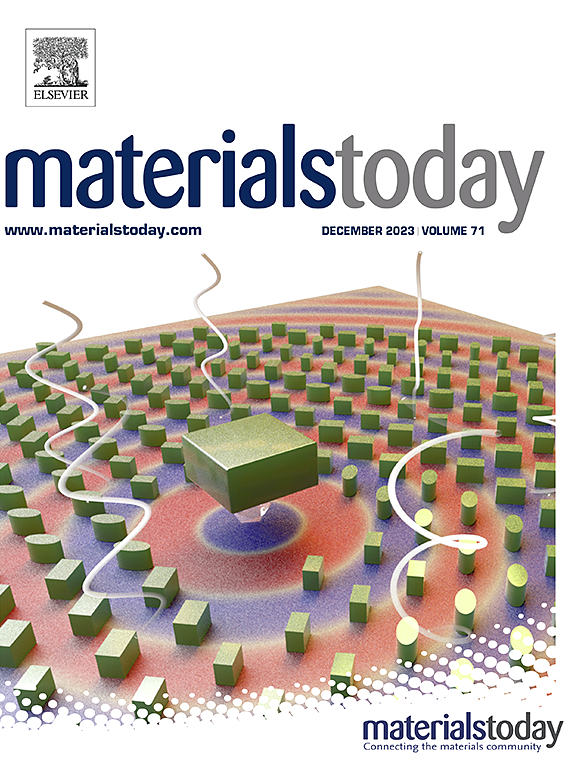Advances and perspectives of hard carbon anode modulated by defect/hetero elemental engineering for sodium ion batteries
IF 21.1
1区 材料科学
Q1 MATERIALS SCIENCE, MULTIDISCIPLINARY
引用次数: 0
Abstract
Sodium-ion batteries (SIBs) serve as a promising complement to lithium-ion batteries for large-scale energy storage, leveraging the abundance of sodium resources and notable safety advantages. The key advancement in SIB industrialization hinges on identifying a cost-effective and high-performance anode material, similar to the graphite anode in lithium-ion batteries. Hard carbon emerges as prime anode materials for SIBs, boasting high specific capacity, low sodium storage potential, and wide availability. However, practical applications of hard carbon encounters challenges such as low initial Coulombic efficiency (ICE), inadequate long-term cycling stability, and poor rate performance. Recent research has focused on the optimization of hard carbon electrodes through functional design. In this comprehensive review, we have meticulously examined the progress in enhancing sodium storage performance through microstructural modulation within hard carbon, encompassing four pivotal aspects: heteroatom doping, incorporation of oxygen functional groups, surface coating, and intrinsic defect engineering. Progress in implementing these strategies is scrutinized, while the merits and challenges of each defect engineering approach are discussed. This review also looks into forthcoming opportunities and challenges in the practical application process of hard carbon electrodes in SIBs.

钠离子电池用缺陷/异质工程调制硬碳阳极的研究进展与展望
钠离子电池(SIBs)利用其丰富的钠资源和显著的安全优势,有望成为锂离子电池大规模储能的补充。SIB产业化的关键进展取决于确定一种经济高效的阳极材料,类似于锂离子电池中的石墨阳极。硬碳作为sib的主要阳极材料,具有高比容量、低钠储存潜力和广泛的可用性。然而,硬碳的实际应用面临着初始库仑效率(ICE)低、长期循环稳定性不足、速率性能差等挑战。最近的研究主要集中在通过功能设计来优化硬碳电极。在这篇全面的综述中,我们仔细研究了通过硬碳内部的微观结构调制来提高钠存储性能的进展,包括四个关键方面:杂原子掺杂、氧官能团的掺入、表面涂层和内在缺陷工程。在实施这些策略的过程中,我们将仔细审查,同时讨论每种缺陷工程方法的优点和挑战。本文还展望了硬碳电极在sib中实际应用过程中面临的机遇和挑战。
本文章由计算机程序翻译,如有差异,请以英文原文为准。
求助全文
约1分钟内获得全文
求助全文
来源期刊

Materials Today
工程技术-材料科学:综合
CiteScore
36.30
自引率
1.20%
发文量
237
审稿时长
23 days
期刊介绍:
Materials Today is the leading journal in the Materials Today family, focusing on the latest and most impactful work in the materials science community. With a reputation for excellence in news and reviews, the journal has now expanded its coverage to include original research and aims to be at the forefront of the field.
We welcome comprehensive articles, short communications, and review articles from established leaders in the rapidly evolving fields of materials science and related disciplines. We strive to provide authors with rigorous peer review, fast publication, and maximum exposure for their work. While we only accept the most significant manuscripts, our speedy evaluation process ensures that there are no unnecessary publication delays.
 求助内容:
求助内容: 应助结果提醒方式:
应助结果提醒方式:


